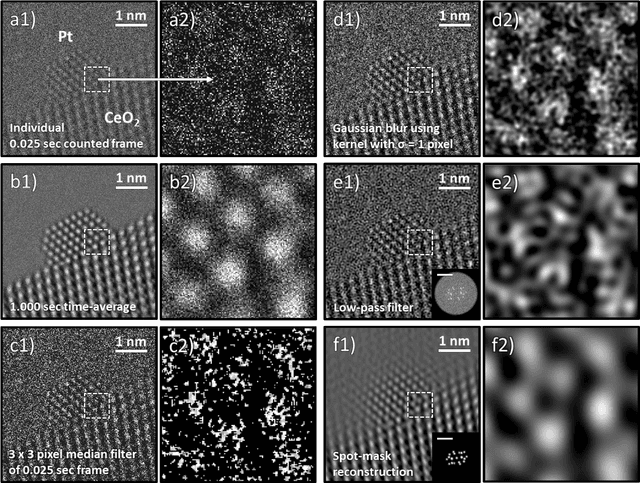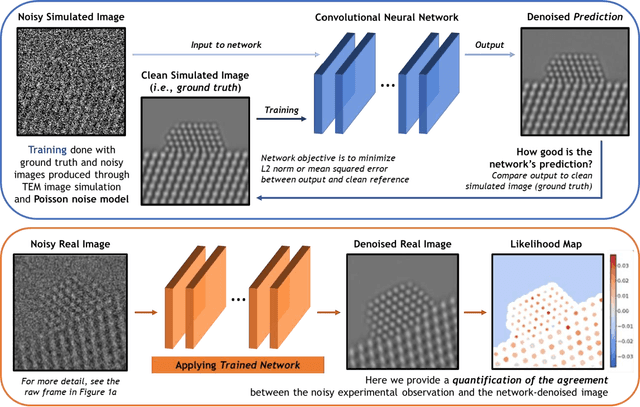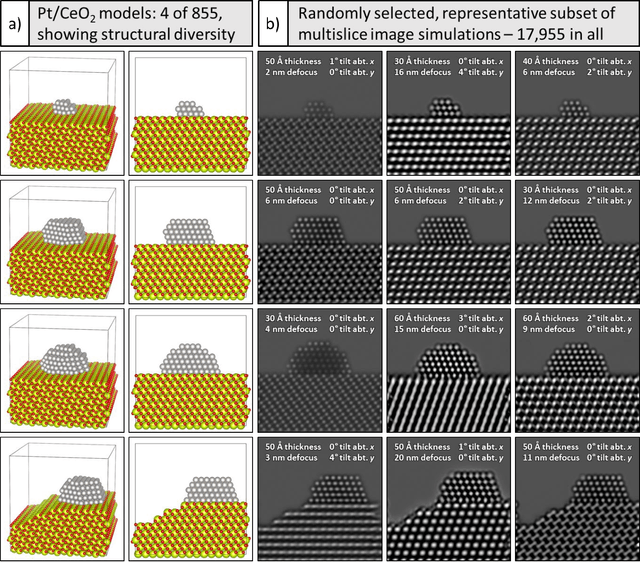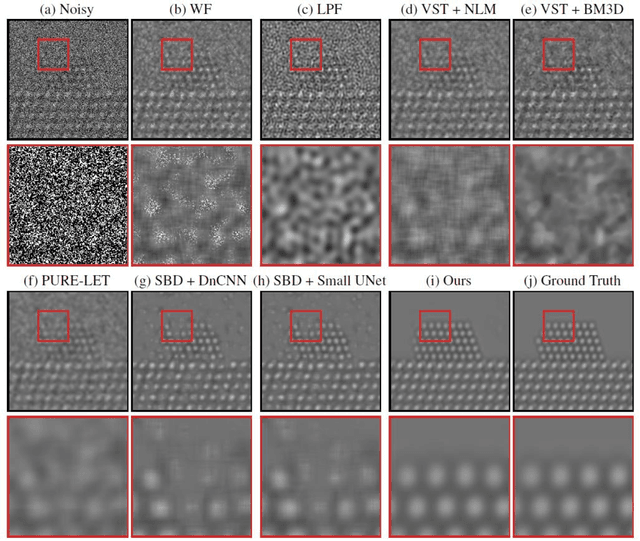Dev Y. Sheth
Developing a Deep Neural Network to Denoise Time-Resolved In Situ ETEM Movies of Catalyst Nanoparticles
Jan 19, 2021



Abstract:A deep learning-based convolutional neural network has been developed to denoise atomic-resolution in situ TEM image datasets of catalyst nanoparticles acquired on high speed, direct electron counting detectors, where the signal is severely limited by shot noise. The network was applied to a model catalyst of CeO2-supported Pt nanoparticles. We leverage multislice simulation to generate a large and flexible dataset for training and testing the network. The proposed network outperforms state-of-the-art denoising methods by a significant margin both on simulated and experimental test data. Factors contributing to the performance are identified, including most importantly (a) the geometry of the images used during training and (b) the size of the network's receptive field. Through a gradient-based analysis, we investigate the mechanisms used by the network to denoise experimental images. This shows the network exploits information on the surrounding structure and that it adapts its filtering approach when it encounters atomic-level defects at the catalyst surface. Extensive analysis has been done to characterize the network's ability to correctly predict the exact atomic structure at the catalyst surface. Finally, we develop an approach based on the log-likelihood ratio test that provides an quantitative measure of uncertainty regarding the atomic-level structure in the network-denoised image.
 Add to Chrome
Add to Chrome Add to Firefox
Add to Firefox Add to Edge
Add to Edge